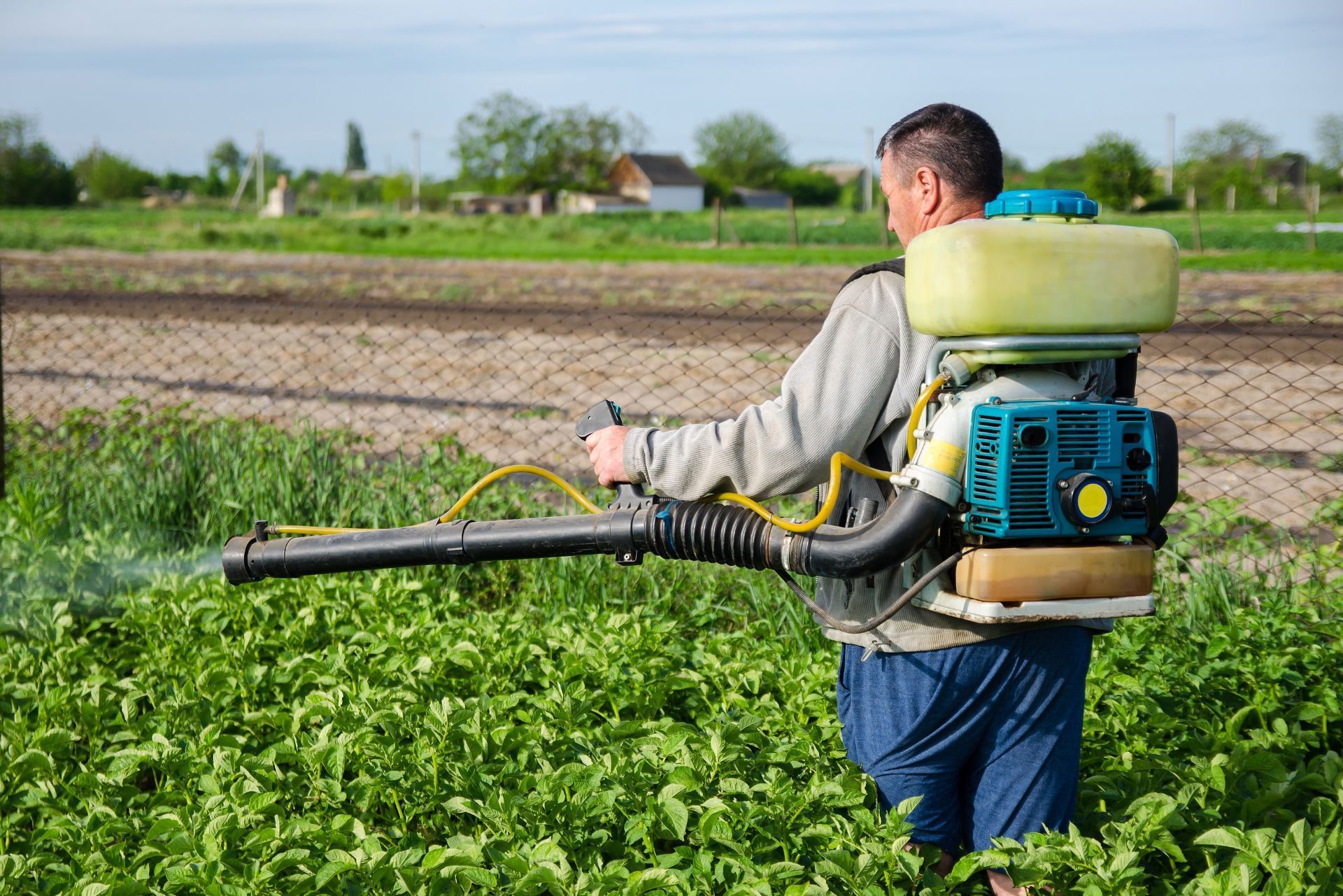Colorado Pest Control and Pesticide Applicator Insurance

8:30am - 5:00pm Mon-Fri
We'll Reply in 15min*
Index
Understanding Colorado’s Pesticide Applicator Licensing and Regulations
Why Specialized Insurance is Critical for Pest Control and Pesticide Applicators
Industry Trends Shaping Pest Control Insurance Needs
Choosing the Right Insurance Provider and Policy
Practical Steps to Protect Your Pest Control Business
Frequently Asked Questions About Pest Control Insurance in Colorado
Final Thoughts on Protecting Your Colorado Pest Control Business
Contact Us
Phone
303-421-5123
Location
9035 Wadsworth Parkway
Suite 2730B
Westminster, CO 80021
Running a pest control business or working as a pesticide applicator in Colorado comes with unique challenges. From strict state regulations to evolving market demands, professionals in this field need insurance coverage that matches their risks and responsibilities. Understanding the landscape of Colorado pesticide laws and the insurance options available can protect your business from costly claims and regulatory setbacks.
Colorado’s pesticide regulations are governed by the
Colorado Department of Agriculture (CDA), which enforces the Colorado Pesticide Applicators’ Act. This framework sets the standards for pesticide use, licensing, and applicator conduct. Navigating these rules while managing day-to-day operations requires more than just expertise in pest control-it demands tailored insurance coverage that safeguards your business and clients.
Understanding Colorado’s Pesticide Applicator Licensing and Regulations
Before diving into insurance, it’s important to grasp the regulatory environment. The CDA oversees pesticide applicator licensing, ensuring that anyone applying pesticides in Colorado meets specific training and certification requirements. This protects public health and the environment by promoting safe pesticide use.
Since January 1, 2024, private pesticide applicators in Colorado must hold additional categories on their license to perform aerial or fumigation applications. This change reflects the state’s commitment to tighter controls on specialized pesticide applications, which carry higher risks. The introduction of these new categories not only enhances safety protocols but also aligns with national standards aimed at minimizing the potential for environmental contamination and ensuring that applicators are well-versed in the complexities of these methods.
For those preparing to become licensed, Colorado State University’s Pesticide Applicator Training program offers comprehensive courses tailored to Colorado’s environment and regulatory requirements. Completing this training not only prepares applicators for the state licensing exam but also instills best practices that reduce liability risks. The curriculum includes hands-on training, case studies, and the latest research on integrated pest management, equipping future applicators with the knowledge to make informed decisions in the field.
Digital Licensing and Compliance Tracking
In a move toward modernization, the CDA has introduced digital licensing. Applicators can now store and access their pesticide licenses through the myColorado app, streamlining compliance verification during inspections or client interactions. This digital shift helps reduce paperwork errors and ensures licenses are current, which is crucial for maintaining insurance eligibility and regulatory compliance. Furthermore, the app provides reminders for license renewals and updates on new regulations, empowering applicators to stay informed and compliant without the burden of manual tracking.
Additionally, the myColorado app features a user-friendly interface that allows applicators to access training resources, safety guidelines, and emergency response protocols at their fingertips. This accessibility is particularly beneficial in urgent situations where quick decision-making is essential. By integrating technology into the licensing process, the CDA not only enhances operational efficiency but also fosters a culture of accountability and responsibility among pesticide applicators in Colorado, ultimately contributing to safer agricultural practices across the state.

Why Specialized Insurance is Critical for Pest Control and Pesticide Applicators
Pest control businesses face a variety of risks that standard business insurance policies may not fully cover. These include chemical exposure claims, environmental damage, property damage, and personal injury resulting from pesticide applications. Insurance products designed specifically for pest control and pesticide applicators address these unique exposures. The nature of pest control work often involves handling hazardous materials, which increases the likelihood of accidents and legal claims. As such, having the right insurance coverage is not just a precaution; it's a necessity for safeguarding both the business and its clients.
General liability insurance is essential but often insufficient on its own. Policies tailored for pesticide applicators typically include coverage for pollution liability, which protects against claims related to chemical spills or contamination. Additionally, commercial auto insurance is necessary for vehicles used to transport pesticides and equipment. The transportation of these materials is fraught with risk, and any incident could lead to significant financial repercussions. Moreover, pest control companies must also consider the implications of regulatory compliance, as failure to adhere to environmental standards can result in hefty fines and reputational damage.
Key Insurance Coverages to Consider
| Coverage Type | What It Covers | Why It Matters |
|---|---|---|
| General Liability | Bodily injury, property damage, and personal injury claims | Protects against lawsuits from clients or third parties |
| Pollution Liability | Chemical spills, environmental contamination, cleanup costs | Essential for pesticide-related environmental risks |
| Commercial Auto | Vehicles used for business operations, including pesticide transport | Covers accidents and damages involving company vehicles |
| Workers’ Compensation | Employee injuries on the job | Required by law for most businesses with employees |
| Professional Liability | Errors, omissions, or negligence in service delivery | Protects against claims of faulty application or advice |
In addition to these coverages, pest control businesses should also explore options for equipment insurance, which can cover the cost of replacing or repairing specialized tools and machinery used in pest management. This is particularly important given the high cost of advanced pest control technology, such as thermal imaging cameras or drone surveillance systems. Furthermore, cyber liability insurance is becoming increasingly relevant, as many pest control companies now utilize software for scheduling and client management, making them vulnerable to data breaches. Protecting sensitive client information is not only a matter of legal compliance but also crucial for maintaining trust and credibility in the marketplace.
Another important aspect to consider is the importance of risk management training and safety protocols. Insurance companies often look favorably upon businesses that actively implement safety measures, which can lead to lower premiums and better coverage options. Regular training sessions for employees on the safe handling of pesticides, emergency response procedures, and proper use of personal protective equipment can mitigate risks significantly. By investing in both specialized insurance and comprehensive training, pest control businesses can create a safer working environment while also enhancing their operational resilience against unforeseen challenges.
Industry Trends Shaping Pest Control Insurance Needs
The U.S. pest control market is expanding steadily, with a projected compound annual growth rate of 5.3% from 2025 to 2033. This growth is fueled by rising consumer demand for eco-friendly and low-toxicity pest control solutions. Businesses that adapt to these trends may face new risks, such as claims related to alternative treatment methods or regulatory scrutiny over chemical usage. As consumers become more environmentally conscious, pest control companies are increasingly integrating sustainable practices into their operations, which can also lead to unique liabilities, such as the need to properly train staff on the use of new products and techniques that comply with environmental regulations.
Within this market, the B2B segment holds a dominant revenue share of nearly 80%, driven by sectors like foodservice, hospitality, healthcare, and retail. These industries often require rigorous pest control standards, increasing the liability exposure for applicators working in commercial settings. For instance, a pest control service operating in a restaurant must navigate strict health codes and food safety regulations, making it essential for them to maintain comprehensive insurance coverage that addresses potential claims arising from pest-related incidents that could affect public health or lead to costly business interruptions.
Colorado’s pest control professionals benefit from the active involvement of the Colorado Pest Control Association (CPCA). The CPCA monitors legislative and regulatory developments, advocating for policies that support industry growth and professional standards. Staying informed through such associations can help businesses anticipate insurance needs and regulatory changes. Furthermore, the CPCA provides valuable resources, including training programs and workshops, which can enhance the skills of pest control operators and ensure they are well-equipped to meet evolving industry standards and consumer expectations.
Adjusting Coverage for Specialized Applications
With the new licensing requirements for aerial and fumigation pesticide applications, insurance policies must reflect the increased risks these methods pose. Businesses offering these services should ensure their coverage includes endorsements or riders that address aerial application liabilities, including potential drift damage and fumigation mishaps. Additionally, as technology advances, many pest control companies are incorporating drones into their operations for aerial inspections and pesticide applications. This innovative approach not only improves efficiency but also introduces new liability considerations, such as the need for specialized training for operators and insurance that covers drone-related incidents.
Moreover, the growing trend of integrating smart technology into pest control practices, such as the use of IoT devices for real-time monitoring of pest activity, is reshaping the landscape of risk management in the industry. These technologies can help pest control companies proactively address infestations before they escalate, but they also require a reevaluation of existing insurance policies to ensure coverage extends to potential data breaches or equipment failures. As the industry continues to evolve, staying ahead of these trends will be crucial for pest control businesses to maintain a competitive edge while effectively managing their insurance needs.
Choosing the Right Insurance Provider and Policy
Finding an insurance provider familiar with the pest control industry and Colorado’s regulatory environment is crucial. Providers that understand the nuances of pesticide application risks can tailor policies to cover specific exposures without unnecessary gaps or excessive premiums. This understanding is vital not only for compliance but also for the peace of mind that comes with knowing your business is adequately protected against potential liabilities.
When evaluating policies, consider the following:
- Does the insurer provide pollution liability coverage specific to pesticide applications?
- Are there limits and deductibles that align with your business size and risk profile?
- Does the policy cover all licensed categories you operate under, including aerial or fumigation if applicable?
- Is there support for compliance with Colorado’s digital licensing and inspection processes?
Working with an insurance broker who specializes in pest control can simplify this process. They can help identify coverage gaps and negotiate terms that protect your business effectively. Additionally, a knowledgeable broker can provide insights into industry trends, helping you anticipate future risks and adjust your coverage accordingly. This proactive approach can be invaluable in a field where regulations and best practices are constantly evolving.
Furthermore, it is essential to review the insurer's claims process and customer service reputation. A provider that offers a streamlined claims process can significantly reduce stress during challenging times. Look for reviews or testimonials from other pest control businesses to gauge their experiences. Engaging with peers in the industry can also provide recommendations for reliable insurers who understand the specific challenges faced by pest control operators in Colorado.

Practical Steps to Protect Your Pest Control Business
Insurance is one part of a broader risk management strategy. Here are practical steps to reduce liability and improve your insurance standing:
- Maintain up-to-date licensing: Use the myColorado app to keep your pesticide applicator license accessible and current.
- Invest in ongoing training: Programs like those from Colorado State University help applicators stay informed on best practices and regulatory changes.
- Document all pesticide applications: Detailed records can be invaluable in defending against claims or regulatory actions.
- Communicate clearly with clients: Provide written instructions and disclosures about pesticide use and safety precautions.
- Engage with industry groups:
Membership in the CPCA offers networking, advocacy, and education opportunities.
Frequently Asked Questions About Pest Control Insurance in Colorado
Q: Is general liability insurance enough for a pesticide applicator?
A: General liability covers basic risks but often excludes pollution and chemical-related claims. Specialized pollution liability coverage is recommended for pesticide applicators.
Q: Are pesticide applicators required to have a license in Colorado?
A: Yes. The Colorado Department of Agriculture requires applicators to be licensed under the Colorado Pesticide Applicators’ Act, with additional categories needed for aerial and fumigation applications.
Q: Can I store my pesticide applicator license digitally?
A: Yes. The CDA allows licenses to be stored and accessed via the myColorado app, simplifying compliance and inspections.
Q: How does the growth of eco-friendly pest control affect insurance?
A: New treatment methods may introduce different risks. Insurance policies should be reviewed to ensure coverage for alternative pest control techniques.
Q: What industries drive demand for commercial pest control in Colorado?
A: Foodservice, hospitality, healthcare, and retail sectors are major clients, requiring strict pest control standards and increasing applicator liability exposure.
Q: Where can I find training to prepare for Colorado’s pesticide applicator license?
A: Colorado State University offers comprehensive training programs tailored to state regulations and environmental conditions.
Final Thoughts on Protecting Your Colorado Pest Control Business
Insurance coverage for pest control and pesticide applicators in Colorado must be as precise and thorough as the services provided. Understanding state regulations, keeping up with licensing requirements, and selecting insurance policies that address unique chemical and environmental risks are essential steps toward safeguarding your business.
Colorado’s evolving regulatory landscape, combined with growing market demands for sustainable pest control, means applicators must stay informed and proactive. Leveraging resources like the CDA, Colorado State University training, and the Colorado Pest Control Association can help you navigate these changes confidently.
By aligning your insurance coverage with your operational risks and regulatory obligations, your pest control business can thrive without the worry of unexpected liability or compliance issues.




